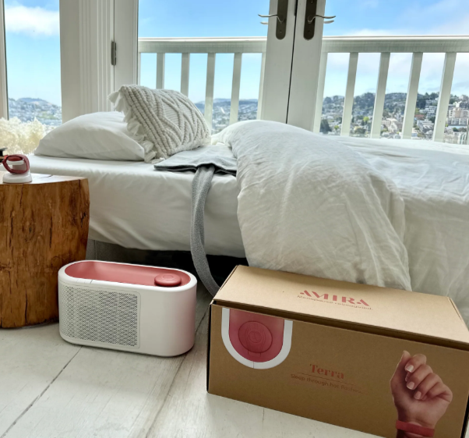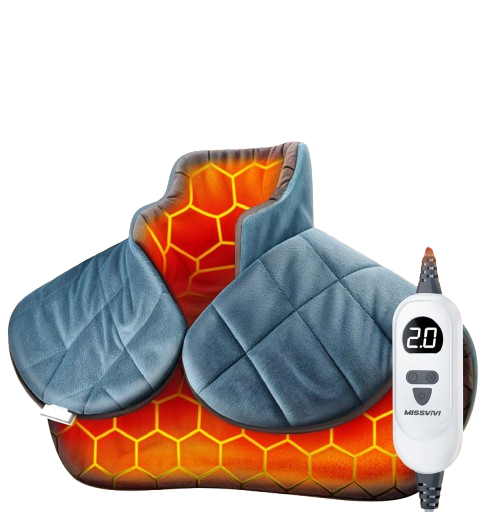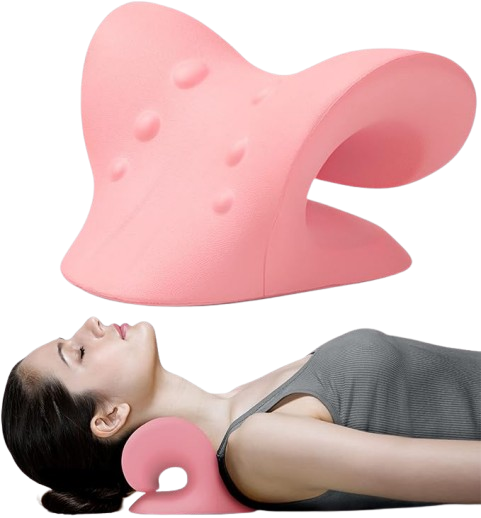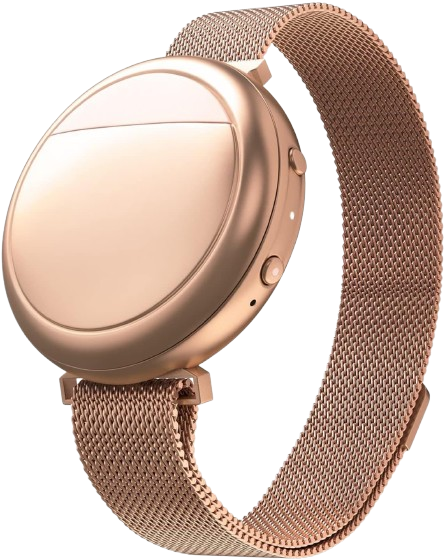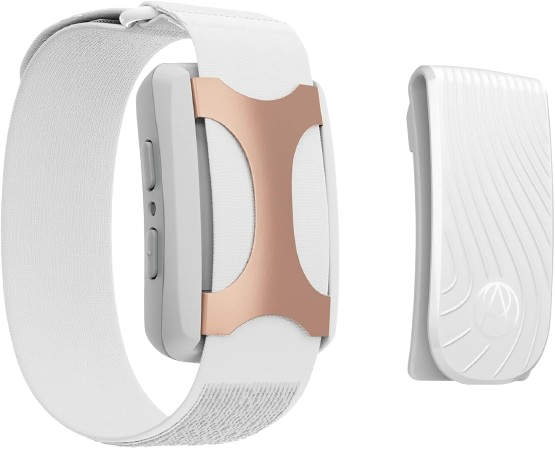A global study published in Human Reproduction found that endometriosis patients experience surgical menopause 19 months earlier and natural menopause 5 months earlier than those without the condition. Even more alarming, they are twice as likely to undergo menopause before age 40.
For women already struggling with endometriosis symptoms, this adds another layer of concern and raises important implications for women’s health, from fertility planning to the management of long-term disease risks like osteoporosis and cardiovascular issues.
What Is Premature Menopause and Why It Matters
Premature menopause is defined as menopause that occurs before the age of 40, while early menopause occurs between ages 40 and 44. In both cases, the ovaries stop functioning earlier than expected, leading to a permanent end to menstruation and fertility.
Why does this matter? Because menopause isn’t just a reproductive milestone — it’s a significant hormonal shift. Women entering menopause prematurely face heightened risks of:
- Bone loss and osteoporosis
- Heart disease
- Mood disorders
- Cognitive decline
Knowing the early menopause age range and the signs associated with it is essential for taking preventive health measures early.
New Study Shows Clear Link Between Endometriosis and Premature Menopause
Led by Dr. Hsin-Fang Chung from the University of Queensland, this study analyzed data from 279,048 women across the UK, Australia, Sweden, and Japan, collected between 1996 and 2022.
Among the findings:
- Women with endometriosis were 7 times more likely to undergo surgical menopause (the removal of both ovaries) than those without the condition.
- Natural menopause occurred, on average, 5 months earlier in women with endometriosis.
- Surgical menopause occurred 19 months earlier, on average.
- Women with endometriosis were twice as likely to have surgical menopause before 40, and 1.4 times more likely to have natural menopause before 40.
These results suggest that even when surgery is not involved, endometriosis may accelerate the ovarian aging process.
Why Does Endometriosis Lead to Early Menopause?
Endometriosis contributes to early or premature menopause through multiple mechanisms, primarily by damaging ovarian tissue and depleting egg reserves. One key factor is the presence of endometriomas, commonly called “chocolate cysts.” These cysts form when endometrial-like tissue invades the ovaries, disrupting healthy follicles and accelerating the loss of viable eggs.
Additionally, surgical interventions—such as the removal of endometriosis lesions or, in severe cases, the ovaries themselves—can abruptly trigger menopause. Even fertility-sparing surgeries may inadvertently reduce ovarian function over time.
Beyond structural damage, chronic inflammation plays a role; the persistent pelvic inflammation associated with endometriosis may accelerate ovarian aging, further shortening reproductive lifespan.
As Dr. Gino Pecoraro, a leading gynecologist, notes: “Endometriomas and their removal often lead to early natural menopause. If a woman’s ovaries are removed, she needs immediate menopause management to address symptoms and long-term health risks.” This underscores the importance of proactive care for endometriosis patients, particularly those undergoing surgery.
Symptoms of Premature Menopause in Women with Endometriosis
Whether natural or induced, menopause causes a range of physical and emotional symptoms. Recognizing the symptoms of early menopause can help women with endometriosis take proactive steps to protect their health.
Common signs include:
- Irregular or missed periods
- Hot flushes
- Vaginal dryness
- Irritability or mood swings
- Night sweats
- Trouble sleeping
- Decreased libido
- Dry skin or thinning hair
Since endometriosis patients already deal with chronic pain, these symptoms can further reduce quality of life. If you’re under 45 and experiencing any of these, regular check-ups with a GP or menopause specialist are essential to monitor bone density, heart health, and hormonal balance.
Premature Menopause: The Hidden Long-Term Health Risks
Experiencing premature menopause before your 40s — whether naturally or surgically — is more than an inconvenience. It can carry serious long-term health risks if not managed carefully.
These include:
- Heart disease
- Type 2 diabetes
- Osteoporosis and bone fractures
- Depression and anxiety
- Premature death, in some studies
Women facing premature menopause may require early intervention strategies including bone density monitoring, cardiovascular screenings, and hormone therapy (when appropriate). It also underscores the need for ongoing care even after the menopause transition.
Managing Endometriosis and Menopause Together
For those navigating both endometriosis and early or premature menopause, management becomes more complex but not impossible. Thanks to evolving research and treatments, options exist to help women maintain their quality of life and long-term health.
Non-Hormonal and Fertility-Sparing Solutions – Modern treatment options include:
- Fertility-sparing surgeries
- Non-hormonal therapies for pain and menopause symptoms
- Bioidentical hormones (in some cases, under strict medical supervision)
- TENS technology – Wearable Tech, such as the Beurer EM50, or Livia, which utilize Transcutaneous Electrical Nerve Stimulation to provide pain relief.
- Lifestyle adjustments – Calcium-rich diets, weight-bearing exercise, and stress management help.
Dr. Chung emphasizes: “Women with endometriosis should focus on prevention strategies and long-term health monitoring.”
Women going through the menopause transition should work with their healthcare provider to develop a personalized care plan based on their risk profile and symptoms.
Take Charge of Your Hormonal Health
Here’s what you can do today:
- Track your symptoms — both of endometriosis and early menopause
- Know the signs of early menopause and seek care early
- Request hormone level testing and discuss your ovarian reserve
- Get bone density scans and cardiovascular risk assessments
- Revisit your treatment options regularly with your doctor
Being informed is your first line of defense. If you’re living with endometriosis, now is the time to start asking the tough questions about your long-term hormonal health.
Awareness Is Power
This new study confirms what many experts have long suspected — endometriosis doesn’t just affect fertility and pain levels. It may also significantly increase the risk of premature menopause, with all the health consequences that follow. If you have endometriosis or are experiencing symptoms of early menopause, don’t wait. Talk to your doctor, get informed and take action.
At Femmtech, we empower women with cutting-edge, drug-free solutions designed to ease both endometriosis symptoms and menopause symptoms, from hot flashes and night sweats to pelvic floor health and sleep support. Explore our expertly curated offering at femmtech.com and menopause.femmtech.com
]]>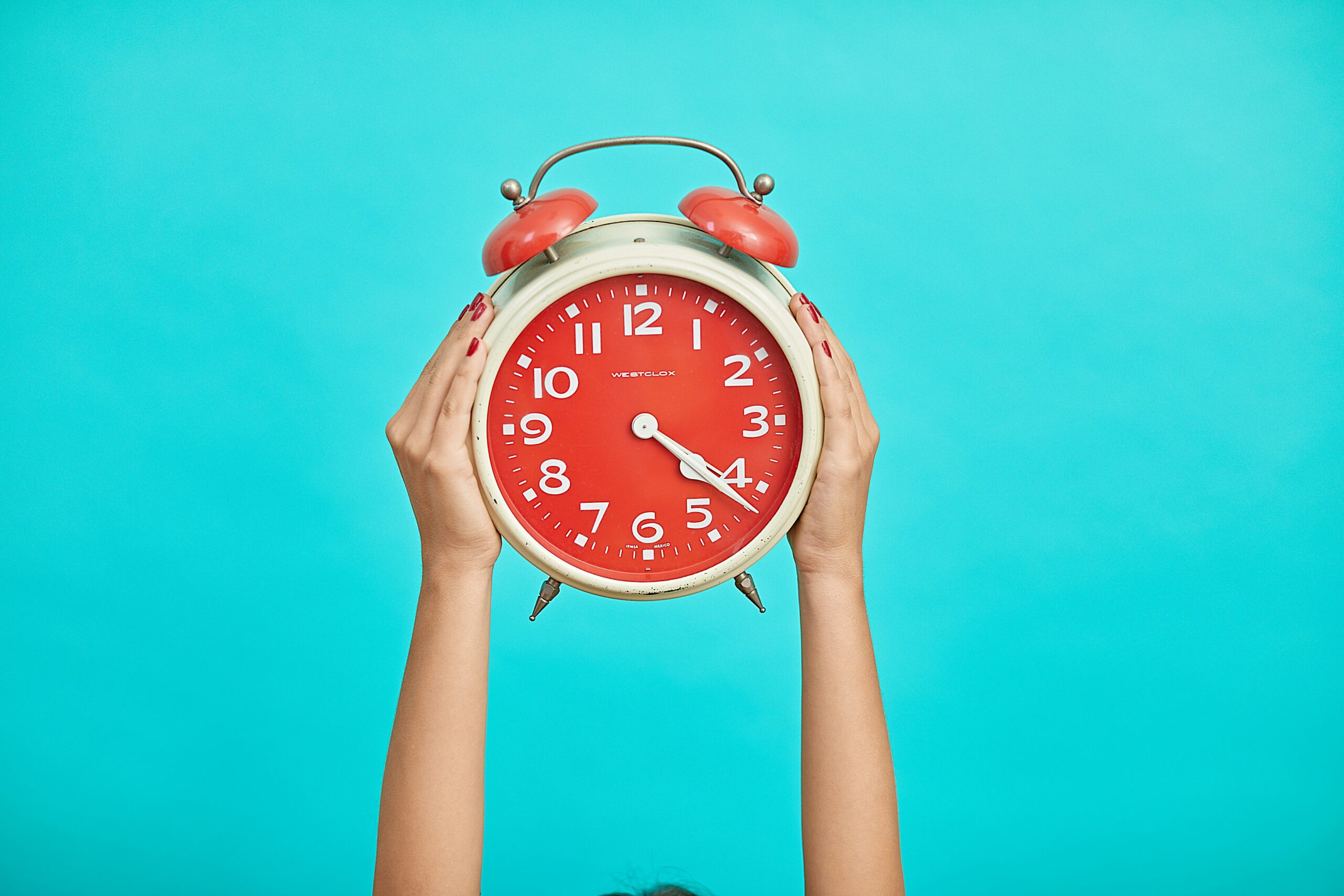
How Timing Your Meals Can Boost Metabolism, Balance Hormones, and Restore Energy After 50
If you’re a woman between 50 and 70, you’ve likely experienced the frustrating changes that come with menopause: unexplained weight gain, energy crashes, hot flashes, and brain fog. What if there was a scientifically-proven approach that could address these issues at their root? Enter intermittent fasting—a powerful tool that goes beyond weight loss to actually recalibrate your metabolism and hormones during this transitional phase.
Unlike restrictive diets that often backfire during menopause, intermittent fasting works with your body’s natural rhythms. Research shows it improves insulin sensitivity, which directly targets one of the main drivers of menopausal weight gain. But the benefits extend far beyond the scale—from reduced inflammation to better sleep and even cognitive improvements.
As highlighted in The Menopause Reset by Dr. Michelle Gordon, intermittent fasting for menopause offers a structured way to navigate this life stage without HRT.
The Science Behind Intermittent Fasting & Menopause
During menopause, estrogen levels can drop by 40-60%, leading to increased insulin resistance and changes in fat storage patterns, as the body becomes more prone to storing fat, particularly around the abdomen. That’s why the belly fat you could once walk off now seems stubborn. At the same time, muscle mass naturally declines about 1% annually after age 50.
How Intermittent Fasting Works With (Not Against) Your Changing Body
1. Hormone Rebalancing
Fasting periods allow insulin levels to normalize, which is crucial since menopausal women are particularly vulnerable to insulin resistance. A 2020 study in Menopause journal found that women practicing intermittent fasting showed 20-30% better insulin sensitivity compared to control groups, allowing their bodies to burn stored fat more efficiently.
2. Autophagy: Your Cellular Clean-Up Crew
The cellular cleansing process called autophagy, which kicks in after 14-16 hours of fasting, helps reduce inflammation linked to joint pain and cognitive issues. Fasting puts your cells into clean-up mode, breaking down damaged cells and reduces inflammation. The result? Less joint pain, clearer thinking, and even healthier-looking skin.
3. Cortisol Control
Menopause increases your sensitivity to stress. Cortisol (the stress hormone) can spike, especially with poor sleep or erratic eating. Properly timed intermittent fasting can help stabilize cortisol rhythms, reducing mood swings, irritability and the intensity of hot flashes and night sweats, resulting in fewer nighttime awakenings. While it might sound miraculous, the cortisol-balancing effects of intermittent fasting are very real – finally giving menopausal women a practical way to dial down the stress response and find some much-needed relief.
The 4 Key Benefits of Intermittent Fasting for Menopausal Women
1. Metabolism Boost
Your metabolism slows about 5% every decade after 50. That means fewer calories are needed—and more are stored. Intermittent fasting works exceptionally well during menopause because it increases the human growth hormone (HGH) by up to 5-fold, counteracting age-related muscle loss. It also enhances fat oxidation by 10-15% according to metabolism studies, and reduces leptin resistance (the “hunger hormone” that becomes less sensitive with age).
2. Visceral Fat Reduction
One of the most significant benefits of intermittent fasting for menopausal women is its ability to target visceral fat – the dangerous abdominal fat that increases heart disease and diabetes risk. Visceral fat responds remarkably well to fasting in menopause: Studies demonstrate a 3-7% reduction in this stubborn fat within just 12 weeks of fasting practice. Many women notice their clothes fitting better before the scale even moves.
Fun fact: A 2022 study in Nature found that postmenopausal women who practiced intermittent fasting lost three times more visceral fat than those who simply reduced calories.
3. Steady Energy & Fewer Mood Swings
Ever feel like you’re crashing by mid-afternoon? That’s unstable blood sugar talking. Intermittent fasting trains your body to rely on fat for energy, keeping your mood and focus stable all day. By training your body to use fat for fuel (ketosis), intermittent fasting helps eliminate afternoon energy crashes, reduce sugar cravings that exacerbate mood swings and provide more consistent energy throughout the day. No more reaching for coffee or chocolate at 3 PM just to stay upright.
4. Brain Fog Lift
Forgetfulness, difficulty concentrating, and that “why-did-I-walk-into-this-room” feeling? That’s inflammation and hormone fluctuation. By reducing inflammatory markers, intermittent fasting sharpens cognition, combatting the brain fog that plagues so many menopausal women. Intermittent fasting also increases BDNF (a crucial brain protein) by 50-400% while potentially lowering Alzheimer’s risk factors.
Implementing Intermittent Fasting Safely After 50
Choosing Your Fasting Window
Start slow. A 12:12 fast (12 hours eating, 12 hours fasting) is a gentle intro that aligns with your body’s circadian rhythm, aligning your eating with daylight hours. Once comfortable, move to a 14:10 schedule. Avoid extreme 18+ hour fasts—they may spike cortisol, especially in women over 50.
- 12:12 Method: 12-hour fast (e.g., 9 PM to 9 AM)
- 14:10 Method: 14-hour fast (e.g., 7 PM to 9 AM)
- 16:8 Method: More advanced, with an eating window from 10 AM to 6 PM
What to Eat During Eating Windows
It’s crucial to break your fast with nutrient-dense meals containing at least 30 grams of quality protein to preserve muscle mass, along with healthy fats and fiber-rich carbohydrates.
Prioritize these menopause-friendly foods to stabilize blood sugar and keep hormones humming.
- Quality Proteins: Eggs, salmon, grass-fed meats (30g per meal minimum)
- Healthy Fats: Avocados, olive oil, nuts/seeds
- Fiber-Rich Veggies: Crucial for gut and estrogen balance
Hydration & Electrolytes
Staying properly hydrated and adding electrolytes to your diet becomes especially important during menopause to combat dryness and support the fasting process. Combat menopausal dryness and support fasting with:
- Stay Hydrated: Consume 2-3 liters of water daily
- Incorporate Electrolytes: Drink water with a pinch of Himalayan salt
- Herbal teas: Peppermint or rooibos can curb hunger and calm the nervous system
Exercise Synergy
For maximum benefits, combine intermittent fasting with:
- Resistance training: 3 times per week to preserve lean muscle and bone density
- Walking: Enhances metabolic benefits and fat burning
- Yoga: Bonus – it also decreases cortisol, reducing sensitivity to stress.
Caution
Skip intermittent fasting if you’re recovering from adrenal fatigue, experience significant fatigue already, or have a history of disordered eating. Always consult a medical professional before making dietary changes.
Troubleshooting Common Challenges
“I Get Hungry at Night!”
Increased nighttime hunger can often be resolved by ensuring adequate protein and calorie intake at dinner and drinking calming herbal teas, such as chamomile tea with cinnamon.
“My Hot Flashes Increase When Fasting”
If hot flashes seem to worsen when fasting, this may indicate the need for a shorter fasting window or attention to electrolyte balance by adding magnesium to your diet. Try to substitute excess caffeine with herbal teas.
“I’m Not Losing Weight”
For those not seeing weight loss results, it’s worth examining whether hidden calories or undereating during feeding windows might be factors. Still not seeing results? It might be time to test your thyroid and hormone levels to rule out hidden metabolic blockers.
Make Intermittent Fasting Work for Your Menopause Journey
Ultimately, intermittent fasting for menopause represents more than just an eating pattern – it’s a powerful tool for taking control of your health during a transformative life stage. It isn’t about deprivation either—it’s about strategic nourishment that honors your changing biology. By giving your body regular breaks from digestion, you create space for healing and rejuvenation exactly when you need it most. For women over 50 looking to thrive rather than just cope through menopause, intermittent fasting offers a scientifically-validated path forward that honors the wisdom of the female body while delivering tangible results. The key is consistency and kindness. Start slow. Track your energy levels, sleep quality, and focus. Not every win shows up on a scale.
At FemmTech Menopause, we empower women with cutting-edge, drug-free solutions designed to ease menopause symptoms, from hot flashes and night sweats to pelvic floor health and sleep support. Explore our expertly curated offering at menopause.femmtech.com
]]>While there’s no universal cure for hot flashes, research shows combining targeted cooling tools with natural remedies for hot flashes can significantly reduce their frequency and intensity. In this guide, we’ll cover the fastest ways to stop a hot flash in its tracks—plus long-term strategies to keep them under control.
Understanding What Causes Hot Flashes
Hot flashes are usually linked to the hormonal ups and downs of menopause—especially when estrogen levels drop. These changes can confuse your hypothalamus (your brain’s built-in thermostat), making it think you’re overheating. Cue the sudden warmth, flushed skin, sweating, and even a racing heart.
Some women also get hit with cold flashes right after, leaving them shivering once the heat passes. And if stress, caffeine, alcohol, or spicy meals are part of your routine? They might crank up the intensity.
While hormone replacement therapy (HRT) can help, many women prefer a natural approach to managing hot flashes—one that doesn’t rely on synthetic hormones or medications.
Instant Cooling Solutions for Hot Flash Relief
When a hot flash strikes, you need relief—fast. These cooling devices are designed to lower your body temperature quickly, helping you regain comfort in seconds.
1. Wearable Cooling Technology: Discreet, On-the-Go Relief
Wearable cooling devices target pulse points where temperature regulation is most effective. Clinical studies show cooling the wrists, neck, or head can interrupt hot flash symptoms within seconds. Today’s wearables are designed with women in menopause in mind—and they’re backed by science.
Top Picks
How it works: This wristband delivers precise cooling waves to thermoreceptors in your wrists.
Why we recommend it: It’s chic, stylish and doubles as a warming band.
Ranvoo Aice Lite Neck Air Conditioner
Get it for $199
How it works: Uses evaporative cooling technology to lower neck temperature (a key hot flash trigger zone).
Why we recommend it: Lightweight, travel-friendly and feels oh so good.
KülCap Instant Cooling Cap (4 colors)
Get it for $65
How it works: Cools the scalp, where 30% of body heat escapes. Multiple studies have linked head cooling to faster hot flash relief.
Why we recommend it: Feels as cool as it looks, perfect for those warm days out.
2. Bedside & Sleep Solutions: Combat Nighttime Hot Flashes
Hot flashes don’t clock out when you do. Night sweats—hot flashes after-dark—can jolt you awake, drenched and frustrated, leaving you exhausted by morning. But here’s the good news: you’re not powerless. Research shows that bedroom temperature and bedding choices play a huge role in how intense (or how mild) your nighttime hot flashes feel. The key? maintaining a cool sleep environment at every angle by using temperature-regulating sleep tools. These solutions address ambient temperature and direct skin contact—critical factors according to sleep studies.
Top Picks:
Amira Terra Cooling System
Get it for $499
How it works: Circulates cold water to a mattress pad, reducing the temperature by up to 10o F in seconds.
Why we recommend it: Predicts hot flashes before they come and works to protect uninterrupted sleep.
Slumber Cloud Performance Sheet Set
Get it for $169-229 (depending on size)
How it works: Outlast® fabric (originally developed for NASA) absorbs and releases heat to maintain optimal temperature.
Why we recommend it: Addresses hot flashes at night without electronics.
BedJet 3 Bed Climate Control Comfort System
Get it for $499
How it works: Powered ventilation cooling rapidly wicks body heat and moisture out of the bed for cooling relief.
Why we recommend it: Works on any size bed or mattress and is simple and easy to use
3. Discreet Cooling Accessories
For those seeking hot flash relief without drawing attention, these subtle solutions blend seamlessly into daily life. Unlike bulky cooling vests or obvious devices, these accessories provide targeted comfort exactly where hot flash symptoms strike most – without sacrificing style or discretion.
Top Picks:
ColdHER Cooling Bra Inserts
Get it for $19
How it works: Slim gel pads use body-activated cooling to lower skin temperature at the core (where most hot flashes originate).
Why we recommend it: Non-toxic, stays cool for 2-3 hours and machine-washable.
Menopod Cooling Device
Get it for $89.21
How it works: Combines a quiet fan with a ceramic cooling plate, fitting discreetly in a palm or pocket.
Why we recommend it: It has been shown to drop skin temperature by 5°F in 30 seconds.
Other Science-Backed Natural Remedies
If you’re navigating menopause and searching for natural ways to ease hot flashes without hormones or medications, you’re not alone. Many women—myself included—prefer gentle, drug-free approaches that work with our bodies, not against them. The good news? Research supports several effective options, from cooling fabrics to ancient healing techniques. Below, we’ll explore 5 proven strategies, complete with studies and real-world practicality—because relief shouldn’t feel like a science experiment.
1. Dress Smarter: Cooling Fabrics & Layering
The Science: A 2019 Menopause study found that moisture-wicking fabrics (like those used in athletic wear) reduced hot flash severity by keeping skin dry and cool.
My Take: I keep a lightweight, breathable cardigan handy at all times—because when a flash hits, peeling off layers feels almost as good as air conditioning.
2. Breathe Through It: Paced Respiration
The Science: A Harvard study found slow breathing cut hot flash frequency by 49% in 8 weeks.
My Take: Use the 4-7-8 method for 10-15 minutes per day. It sounds too simple, but I’ve used this during Zoom meetings—no one notices, and it stops a flash in its tracks. Need help breathing right? These products can help.
3. Eat (and Drink) Strategically
Skip Triggers: Spicy foods, caffeine, and alcohol are notorious for turning up the heat (Harvard Women’s Health Watch).
Try Soy: A meta-analysis in Menopause (2020) linked 54mg/day of soy —think edamame, tofu, or miso —to 26% fewer hot flashes.
My Take: I swapped my afternoon coffee for iced matcha (less caffeine, no crashes) and noticed fewer flares. Small changes can add up.
4. Herbal Helpers: Black Cohosh & Evening Primrose Oil
The Science: The Mayo Clinic notes black cohosh might ease flashes, but evidence is mixed. Evening primrose oil lacks strong data but remains a cult favorite.
My Take: Herbs aren’t one-size-fits-all—my friend swears by black cohosh, but I found relief with acupuncture instead. Patience is key!
5. Acupuncture: Ancient Meets Evidence-Based
The Science: A 2020 BMJ Open meta-analysis found acupuncture moderately effective, likely by balancing endorphins.
My Take: As someone skeptical of needles, I was shocked by how relaxed I felt after sessions—and my night sweats improved within weeks. If needles aren’t your thing, an acupuncture mat can provide similar pressure-point benefits without the prickling sensation.
The Bottom Line
There’s no universal cure for hot flashes, but that doesn’t mean you have to suffer through them. Whether you’re experiencing occasional hot flashes at night or daily episodes that disrupt your routine, a well-rounded, natural approach can offer meaningful relief.
Scientific studies continue to validate what many women have discovered for themselves: that lifestyle changes, cooling strategies, and targeted tech can work together to reduce both the frequency and severity of hot flash symptoms. It’s not about finding one “miracle” fix—it’s about finding the combination that works for you. Menopause may be inevitable, but suffering through it is not.
At FemmTech Menopause, we empower women with cutting-edge, drug-free solutions designed to ease menopause symptoms, from hot flashes and night sweats to pelvic floor health and sleep support. Explore our expertly curated offering at menopause.femmtech.com
]]>What Is Microdermabrasion?
Microdermabrasion is an exfoliation technique that gently removes the outer layer of dead skin cells, revealing fresh, new skin beneath. This process is especially beneficial as we age because our skin’s natural cell turnover slows down, leaving us with dull, uneven skin texture. By exfoliating, microdermabrasion helps to smooth out the skin’s surface, improve skin tone, and reduce visible signs of aging, like fine lines and wrinkles. With an at-home microdermabrasion device, you can replicate the professional treatments right in your own bathroom, saving you time and money while achieving stunning results.
How a Microdermabrasion System Works Its Magic
These devices use diamond tips or crystals to gently buff away dead skin cells, leaving your skin feeling baby-soft and rejuvenated. Microdermabrasion isn’t new—dermatologists have used it for years to reduce wrinkles, fade age spots, and tighten skin. But now, at-home microdermabrasion systems bring that same power to your bathroom counter.
Here’s how it works:
- Exfoliation: Tiny crystals or diamond-tipped wands gently buff away dead skin cells, revealing fresher, smoother skin.
- Stimulation: The process encourages collagen production—your skin’s natural “firming agent.”
- Enhanced absorption: By clearing away buildup, your serums and creams penetrate deeper, working more effectively.
Unlike harsh peels or invasive treatments, a microdermabrasion system is non-invasive, painless, and safe for all skin types—even sensitive skin.
Effectiveness: Real Results You Can See
Microdermabrasion offers quick and noticeable results in the fight against aging skin. With regular use, you’ll start to see a reduction in skin wrinkles and improvements in overall skin texture in just a few sessions. This powerful system stimulates collagen production, helping restore firmness and smoothness to your skin. Within weeks, you’ll notice smoother, more even skin as it sloughs off dead cells and regenerates. Fine lines, age spots, and even acne scars will begin to fade, revealing a radiant, youthful glow faster than you might expect.
Why Choose an At-Home Microdermabrasion System?
IT’S NATURAL | As we get older, we often seek out ways to rejuvenate our skin without going under the knife. Microdermabrasion is an ideal non-invasive solution that delivers excellent results without the pain or downtime associated with other treatments. It’s quick, easy to use, and most importantly, effective.
IT’S ECONOMICAL | The good news is that you don’t need to spend a fortune at a professional spa to achieve these results. An at-home microdermabrasion system allows you to get professional-grade results without the hefty price tag. With just a few minutes of use, you can see visible improvements in your skin’s texture and tone, reducing wrinkles and boosting collagen production.
IT’S CONVENIENT | Major plus: it’s a time-saver, giving you the luxury of professional skincare in the comfort of your home.
But it’s not just about the price tag; it’s about the long-term benefits. By investing in an at-home microdermabrasion device, you’re investing in your skin’s long-term health.
The Real Benefits: Why This Device Belongs in Your Routine
1. Dramatically Reduces Skin Wrinkles & Fine Lines
Let’s talk about reducing skin wrinkles—because that’s what we all want, right? As we age, cell turnover slows, leaving skin dull and lined. A microdermabrasion machine speeds up renewal, softening fine lines and smoothing textured skin over time. Consistent use? You’ll see firmer, younger-looking skin in weeks.
2. Fades Age Spots & Evens Skin Tone
Sun damage and hormonal changes leave behind stubborn dark spots. The gentle exfoliation of a microdermabrasion system helps break up pigmentation, gradually brightening and unifying your complexion.
3. Minimizes Pores & Controls Breakouts
Large pores and congestion make skin look older. By clearing dead cells and excess oil, microdermabrasion refines pores, preventing clogging and breakouts—key for mature skin that’s still acne-prone.
4. Boosts Collagen for Natural Skin Tightening
Collagen loss = sagging skin. But here’s the secret: Microdermabrasion triggers collagen production, acting as a natural skin-tightening device. Over time, skin looks fuller, firmer, and lifted—no needles required.
How to Choose the Best Microdermabrasion Machine for Aging Skin
Not all devices are created equal. Look for: Diamond tip or fine crystal (gentler than coarse scrubs).
Diamond tip or fine crystal (gentler than coarse scrubs). Adjustable suction (for sensitive or thicker skin).
Adjustable suction (for sensitive or thicker skin). FDA-cleared (safety first!).
FDA-cleared (safety first!).
Pro tip: Start slow—1-2x weekly, then increase as your skin adjusts.
Our Top Picks
| FIRMAGLOW® Body Microdermabrasion Device Amazon Score*: 4.4 (127 Reviews) 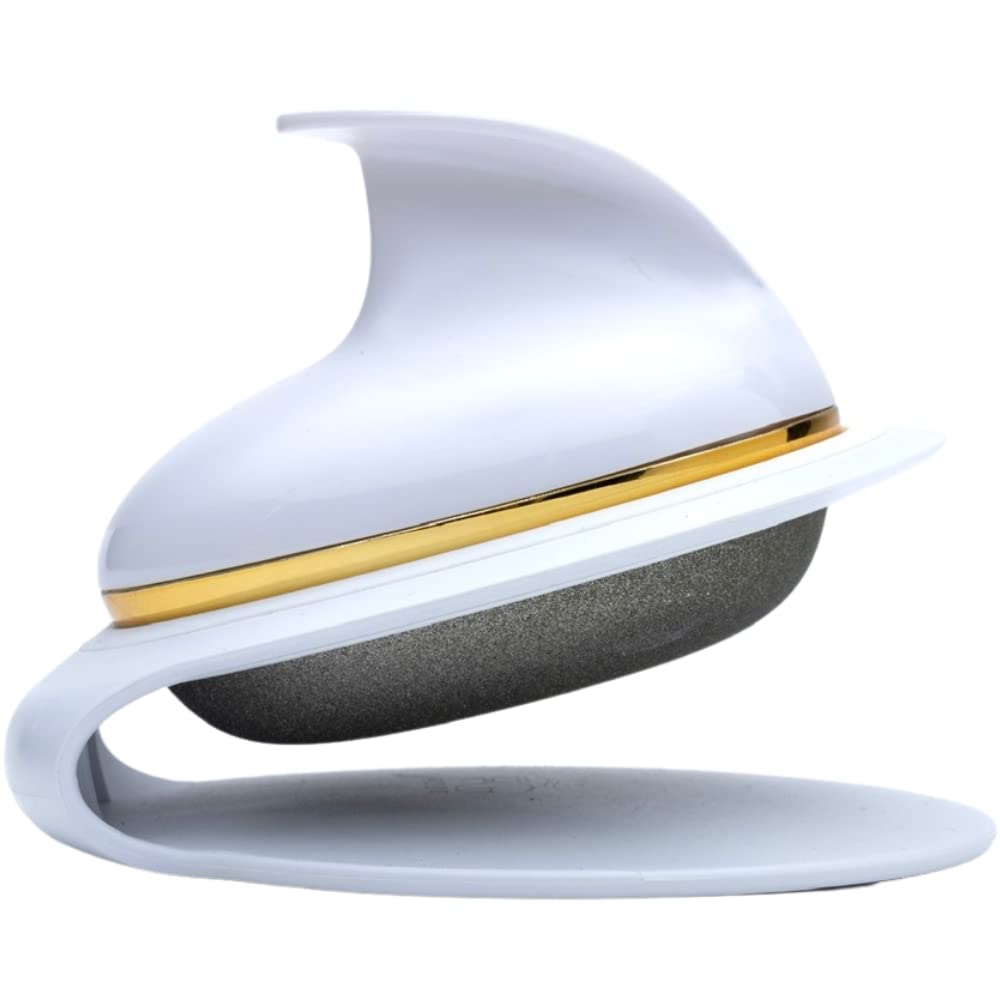 Get it for $149 | PMD Personal Microderm Pro Microdermabrasion Kit Amazon Score*: 4.0 (858 Reviews) 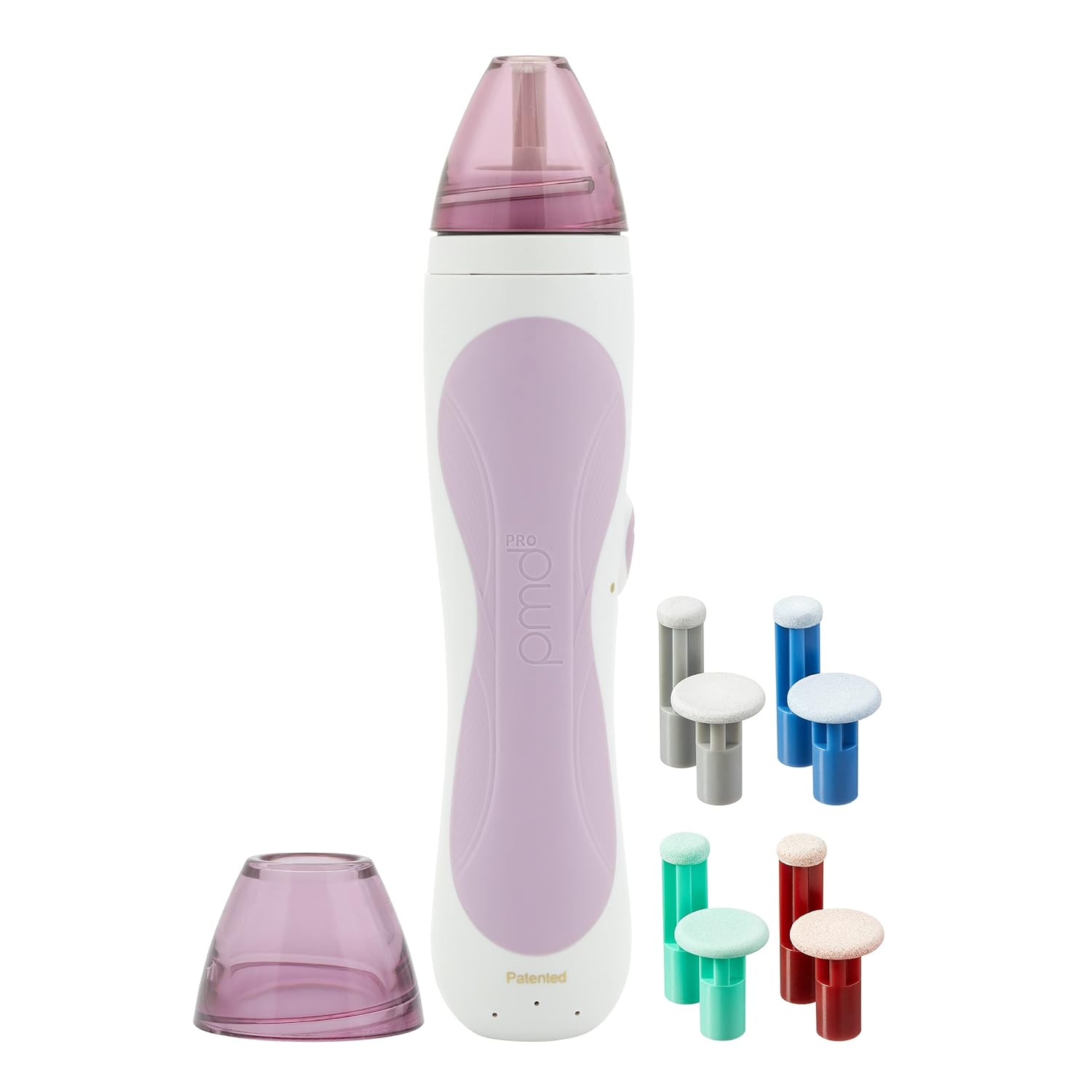 Get it for $199 |
| The Luxene FIRMAGLOW® Body Microdermabrasion Device offers an electricity-free gentle, effective solution for body care. Its diamond surface removes dry skin and improves texture without suction, minimizing irritation. Users report immediate smoothness and softer skin after just one use, making it a top choice for body exfoliation. | The PMD Personal Microderm Pro is a versatile device for both the face and body, using exfoliating crystals and vacuum suction to remove dead skin cells. Its spinning discs reveal a smoother, brighter complexion, while the calibrated vacuum unclogs pores for better skincare absorption. PMD provides more personalized care with high and low speed options. |
| Pros: - No need for power or batteries – Durable diamond surface – Good for sensitive skin – Easy to maintain Instant Smoothness Cons: – Not for face or neck – Manual operation only – Requires physical effort – No personalization settings | Pros: – High and low-speed options – Professional-grade results – Effective for face and body – Vacuum suction feature – Visible skin improvement Cons: – Requires power source – Steeper learning curve – Potential for skin irritation – Higher upfront cost – Needs replacement parts |
*As of 3 April 2025
Final Thoughts: Is a Microdermabrasion System Worth It?
Absolutely. If you want to reduce wrinkles, smooth textured skin, and revive your glow, this is one of the smartest investments you’ll make. Whether you’re dealing with fine lines, age spots, or uneven texture, this affordable and easy-to-use device offers professional-grade results from the comfort of your own home. It’s effective, affordable, and fits into any routine—no downtime, no fuss.
]]>You’re forgetting words mid-sentence, walking into rooms with no idea why… and no amount of sleep helps. But what if your daily habits—not just hormones—are stealthily worsening the fog?
Menopause brain fog during perimenopause, menopause and post-menopausal years is more than just an occasional lapse in memory—it can feel like losing a part of yourself. Studies show that up to 60% of women experience cognitive difficulties during menopause, with many struggling with focus, word recall, and mental clarity. While hormonal shifts play a key role, everyday habits can amplify these symptoms. The good news? These five science-backed solutions can help clear the fog faster than you might think—no prescription required.
Small Adjustments to Your Routine Make a Big Difference
Menopause brain fog can feel like an unavoidable side effect of hormonal changes, but small, intentional adjustments to your daily routine can make a significant difference. The key is understanding that menopause and brain fog isn’t just about estrogen—it’s also influenced by hydration, stress, sleep, posture, and body temperature. By addressing these factors, you’re not just managing symptoms; you’re optimizing your brain function for the long term.
What’s most empowering about these solutions is that they don’t require drastic lifestyle changes. Something as simple as tweaking your breathing pattern, adjusting your evening screen habits, or adding electrolytes to your water can lead to noticeable improvements in focus and memory. And because menopause symptoms—including memory loss during menopause—vary from woman to woman, experimenting with these strategies will help you discover what works best for your body.
The 5 Culprits of Menopause Brain Fog & Quick Fixes
1. Chronic Dehydration
Estrogen decline reduces fluid retention, making dehydration more common. Even mild dehydration—just a 2% fluid loss—can impair concentration, short-term memory, and mood, according to a study published in the Journal of Nutrition (2012).
Why It Matters: Water is essential for brain function. Without proper hydration, the brain has to work harder to perform cognitive tasks, leading to increased fatigue and menopause brain fog.
Fix: “The Electrolyte Slam” – Drink 8 oz of water with a pinch of Himalayan salt and a squeeze of lemon to replenish lost minerals and improve fluid absorption. The salt provides sodium for proper nerve function while the lemon adds potassium – both crucial electrolytes that become depleted during menopause brain fog episodes.
Protip: Keep a bottle by your bed—night sweats dehydrate you while you sleep.
2. Shallow Breathing (Stress Response)
Stress exacerbates menopause symptoms, leading to shallow chest breathing. This reduces oxygen flow to the brain, impairing cognitive function. A study from Harvard Medical School found that deep breathing techniques can significantly lower cortisol levels and enhance focus.
Why It Matters: Menopausal women are more sensitive to stress due to fluctuating hormone levels, making it even more crucial to regulate breathing.
Fix: “4-7-8 Breathing” – Inhale deeply for 4 seconds, hold for 7 seconds, and exhale for 8 seconds. Repeat five times for an instant brain boost.
Protip: Try the Breather or Moonbird breathing device for guided, effective breathwork.
3. Blue Light Overload
Excessive blue light exposure from screens suppresses melatonin production, leading to poor sleep. A 2015 study in PNAS found that evening blue light exposure delays melatonin by 3+ hours—disastrous for menopausal women already struggling with sleep. Poor sleep directly fuels next-day memory loss during menopause.
Why It Matters: Sleep disruptions are a hallmark of perimenopause and menopause. Poor sleep leads to sluggish thinking, forgetfulness, and irritability the next day.
Fix: “Sunset Screen Shift” – Enable night mode on devices two hours before bed and spend at least five minutes winding down without screens.
Protip: For optimal results against menopause brain fog, try the the Luminette 3 Light Therapy Glasses can help regulate your circadian rhythm and improve sleep quality.
4. Poor Posture
A 2014 study in Biofeedback revealed that slouching reduces lung capacity by 20%, starving your brain of oxygen. Menopause symptoms like muscle loss make posture worse over time.
Why It Matters: Poor posture contributes to fatigue and cognitive sluggishness, making memory loss during menopause even more noticeable.
Fix: “Posture Reset” – Stand against a wall with your head, shoulders, and hips aligned. Take three deep breaths while maintaining this posture to realign your spine and increase oxygen intake.
Protip: The Upright GO 2 Premium Posture Corrector Trainer & Tracker can help reinforce good posture habits.
5. Temperature Dysregulation
Hot flashes and night sweats—common in menopause —disrupt sleep, leading to impaired cognitive function and further exacerbate menopause brain fog. The National Institutes of Health (NIH) found that fragmented sleep reduces memory retention and focus.
Why It Matters: Without restorative sleep, the brain struggles to consolidate memories and process information efficiently.
Fix: “Wrist Chill Trick” – Run cold water over your pulse points for 30 seconds to lower core body temperature and induce a cooling effect.
Protip: The Embr Wave 2 can provide instant relief from temperature fluctuations.
The Menopause Connection
Why These Solutions Are Especially Effective Now:
The hormonal fluctuations of ageing, coupled with menopause brain fog, create a perfect storm where everyday challenges become amplified. As estrogen levels decline, your body becomes more vulnerable to dehydration, stress responses become more intense, and sleep disruptions worsen—all of which directly impact cognitive function. For post-menopausal women, the body’s natural thermostat often malfunctions, making temperature regulation strategies particularly valuable.
What makes these solutions so powerful is how they address the specific physiological changes occurring during perimenopause and beyond. Your brain’s need for optimal oxygen and hydration doesn’t change, but your body’s ability to maintain these fundamentals does. That’s why targeted interventions like deep breathing to maximize oxygenation and electrolyte balancing to combat fluid loss make such a dramatic difference. These aren’t generic wellness tips—they’re precision tools designed to counteract the exact mechanisms behind menopause-related brain fog, helping you regain mental clarity where it matters most.
Consistency is Key
If you’re in the perimenopause or post-menopausal phase, remember that consistency matters. These fixes aren’t one-time quick fixes but habits that build over time. Start with one change—maybe the 4-7-8 breathing technique or the posture reset—and observe how your mental clarity shifts. Many women report feeling sharper within just a few days of implementing even one of these adjustments.
The bottom line? You don’t have to accept menopause brain fog as your new normal. With the right tools—backed by science and tailored to your needs—you can reclaim mental clarity and feel more like yourself again. Ready to take the next step? Pick one solution from this list, try it today, and see how your mind responds. Your sharper, more focused future starts now.
]]>
Understanding Menopause Insomnia – Why Sleep Becomes a Struggle
If you’re in your 50s or 60s and finding yourself staring at the ceiling at 3 a.m., you’re not alone. Menopause insomnia affects thousands of women, disrupting sleep and leaving you exhausted the next day. From night sweats to increased anxiety, the reasons behind menopause sleep problems are complex but not unsolvable.
As someone who has personally wrestled with perimenopause insomnia—I know how frustrating it can be. The good news? Science and technology have come a long way, offering practical solutions that don’t involve sleeping pills or complicated routines. Below, we’ll walk you through some of the best sleep devices designed specifically to help women going through menopause and sleeplessness.
Why Does Menopause Insomnia Happen?
Menopause and insomnia go hand in hand due to hormonal shifts, particularly a drop in estrogen and progesterone—two hormones that regulate sleep. When these levels decline, the body struggles to regulate temperature, leading to night sweats that jolt you awake.
Beyond the physical symptoms, stress and anxiety can also keep your brain buzzing long after bedtime. This is why many women experience perimenopause symptoms like difficulty falling asleep, frequent awakenings, or waking up too early and being unable to doze off again.
Common Menopause Sleep Problems Include:
- Waking up drenched in sweat from a hot flash.
- Restless sleep—feeling like you’re never fully resting.
- Anxiety-driven insomnia, where racing thoughts keep you awake.
- Postmenopausal sleep problems, where sleep continues to be elusive even after menopause is over.
The key to better sleep? Finding the right tools to calm your body and mind.
The Best Devices for Menopause and Insomnia Relief
1. Amira Terra Cooling Solution | Cooling Technology for Night Sweats
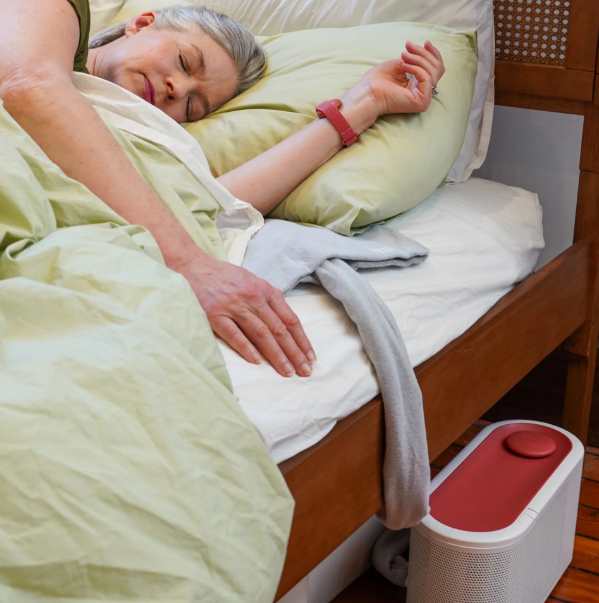
Buy it for
If night sweats are the culprit behind your menopause sleep problems, a cooling sleep system like Amira Terra can be a game-changer. A wearable wrist sensor detects when a hot flash is coming and automatically activates the cooling function, ensuring you stay comfortable. This temperature-regulating mattress pad works by absorbing and redistributing body heat, preventing sudden temperature spikes that wake you up in the middle of the night.
Why It Works:
- Prevents overheating by keeping the bed cool all night.
- No need for ice packs or fans—it works automatically.
- Ideal for menopause insomnia caused by fluctuating body temperature.
Pro Tip: While this high-tech solution is effective, it comes at a premium price of $499 (down from $699). If you struggle with severe night sweats, though, it may be well worth the investment.
2. Embr Wave 2 | A Wearable Cooling & Warming Device
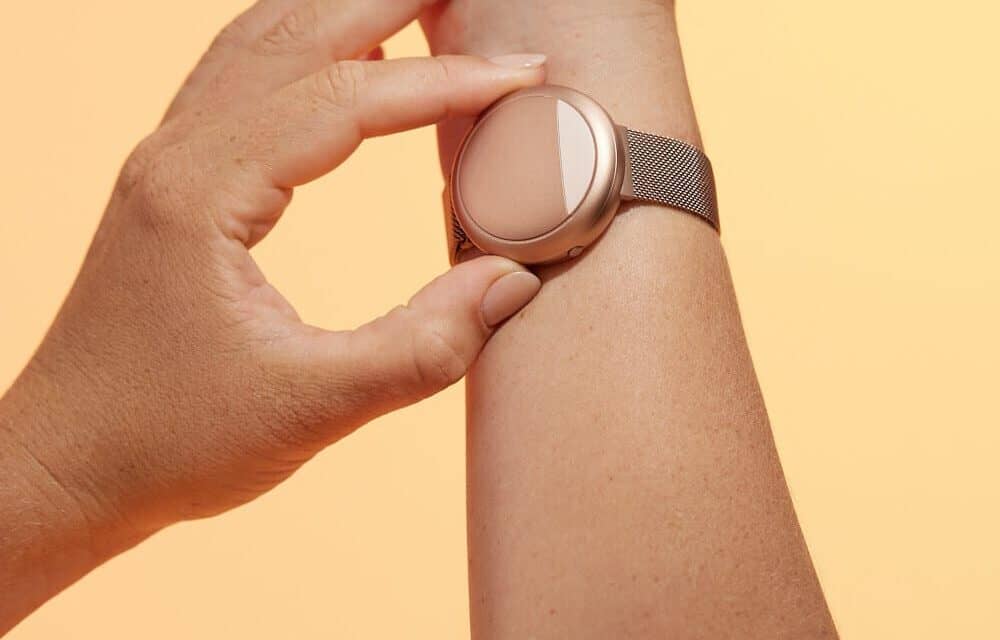
Looking for a lower-priced, full-day solution? Enter Embr Wave 2—a discreet wristband that delivers cooling sensations directly to your skin. Studies have shown that temperature perception plays a huge role in sleep quality, making this device perfect for managing sleep problems during menopause.
Why It Works:
- Cools you down instantly during a night sweat episode.
- Helps regulate body temperature without disrupting sleep.
- Doubles as a warming device—great for those who get cold in the winter.
- Portable—great for travel or wearing at work
Pro Tip: Adjust the intensity settings based on your personal comfort level. Some users find that using it before bed helps prevent overheating in the first place.
3. The HoomBand | Relax Your Mind with Guided Meditation
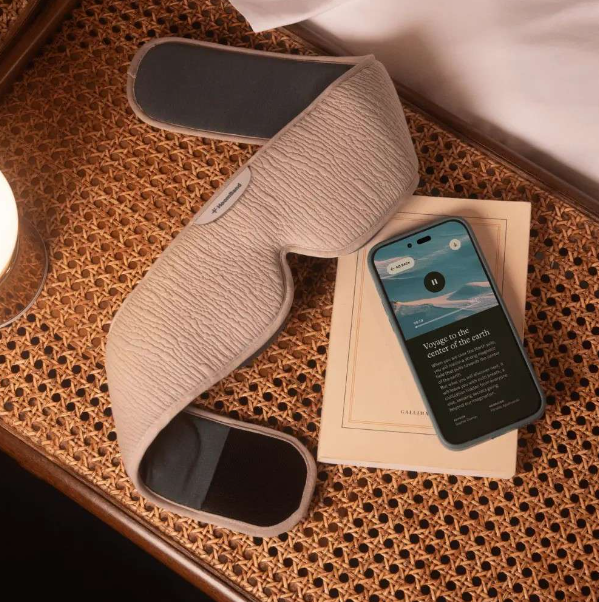
Many women experiencing menopause and sleeplessness find that stress and anxiety keep them awake. The HoomBand is a comfortable sleep headband designed for guided meditation and sleep hypnosis, making it a fantastic option if your menopause insomnia is stress-related.
Why It Works:
- Calms racing thoughts with guided audio programs.
- Helps transition into deep sleep faster.
- Perfect for menopause and perimenopause symptoms like heightened anxiety.
Personal Note: I was skeptical at first, but this device has worked wonders for me. Instead of lying awake worrying about tomorrow’s to-do list, I let the meditation guide me into relaxation. Game-changer!
4. Apollo Neuro | A Wearable That Reduces Stress for Better Sleep
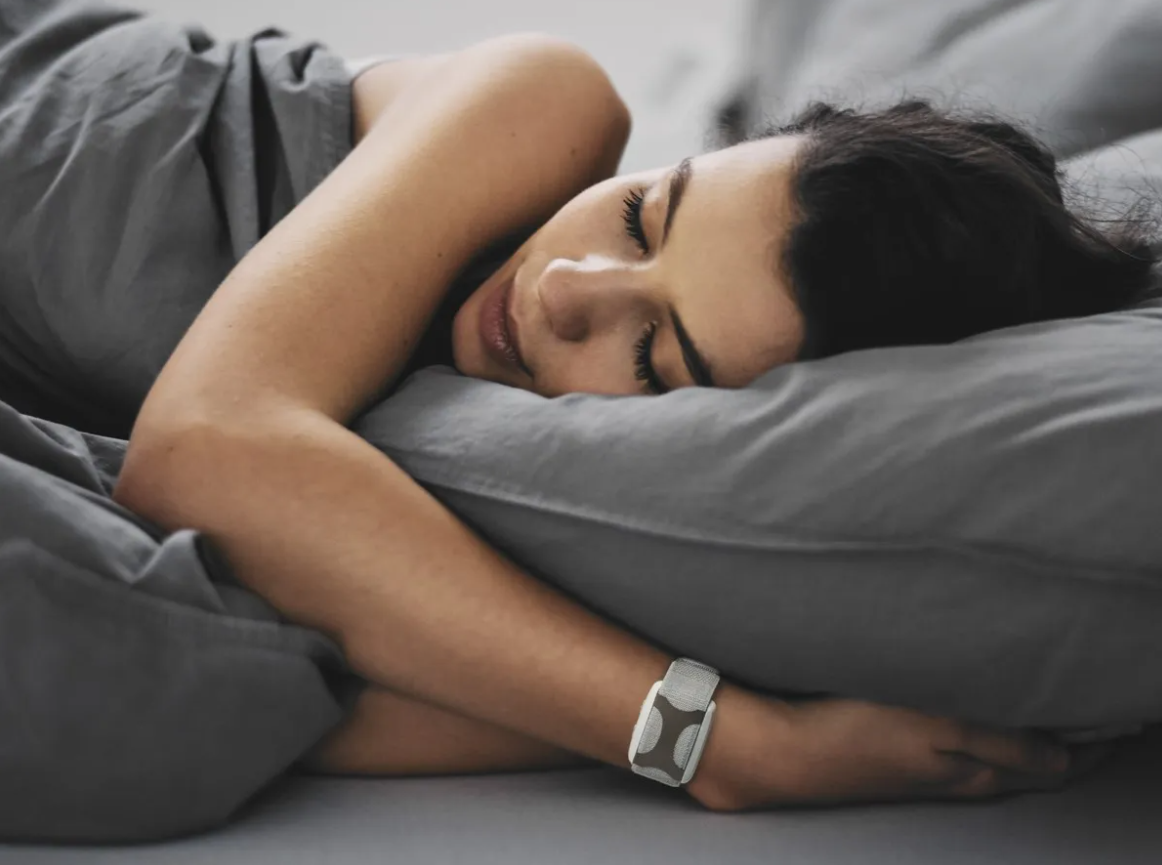
Stress is a major contributor to menopause sleep problems, and the Apollo Neuro device tackles this by using gentle vibrations to activate your parasympathetic nervous system (aka your body’s “calm mode”).
Why It Works:
- Reduces stress and anxiety that keep you up at night.
- Scientifically designed to improve sleep quality.
- Easy to wear on the wrist or ankle.
Pro Tip: Use Apollo Neuro during the day as well—it can help with focus and relaxation, making it a great all-around wellness tool.
5. N.O.W. Tone Therapy by Solu | Sound Therapy for Deep Relaxation
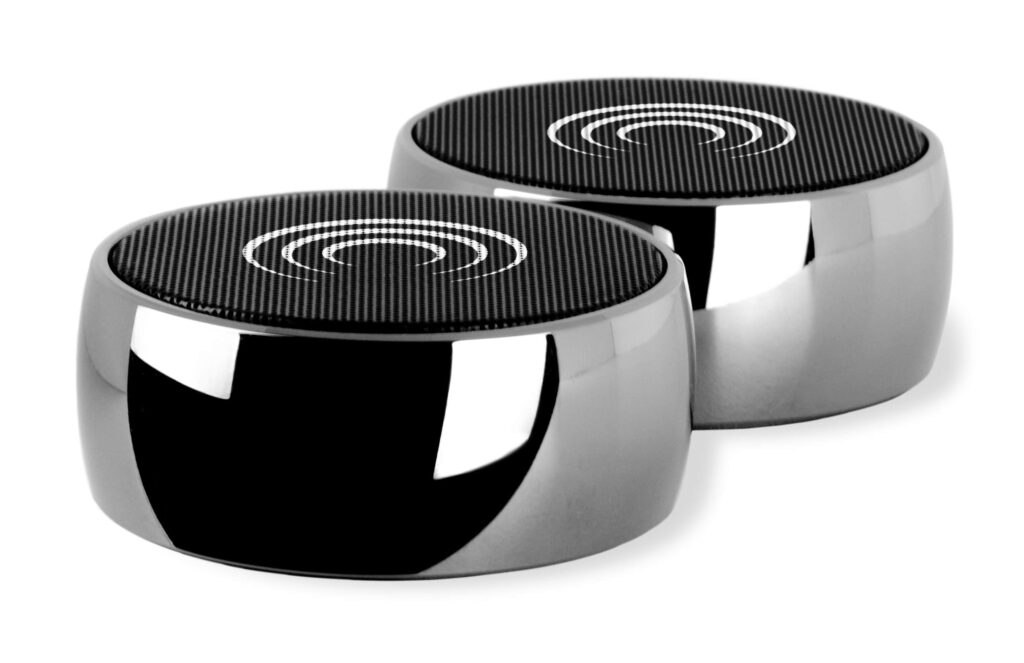
Noise sensitivity often increases during menopause and perimenopause, making even small disturbances unbearable. The N.O.W. Tone Therapy System is a sound-based relaxation tool that plays short, meditative tones to calm the nervous system and encourage restful sleep.
Why It Works:
- Promotes deep relaxation in just 3 minutes
- Helps quiet racing thoughts before bed.
- Great for postmenopausal sleep problems where overall sleep quality is reduced.
Pro Tip: Use the N.O.W. Tone Therapy sessions right before bed as part of your wind-down routine to signal to your brain that it’s time to sleep.
Choosing the Right Device for Your Needs
With so many options, how do you pick the right sleep solution? Ask yourself:
- Is my biggest issue temperature regulation? → Try Amira Terra or Embr Wave 2.
- Do I struggle with anxiety-driven insomnia? → HoomBand or Apollo Neuro can help.
- Am I easily disturbed by noise? → The N.O.W. Tone Therapy System may be your best bet.
Final Thoughts: Finding Sleep Solutions That Work for You
Navigating menopause and insomnia is frustrating, but the right tools and techniques can make a world of difference. Whether it’s cooling down your bed, calming your mind, or blocking disruptive sounds, technology offers science-backed solutions to help you reclaim restful nights.
Always Remember: Every woman’s experience is unique. What works for one person might not work for another, so don’t be afraid to experiment.
]]>The Limitations of Kegel Exercises
Effective Pelvic Floor Workout Exercises Beyond Kegels for Strength and Stability
Deep squats are excellent for engaging the pelvic floor while also working the glutes, hips, and core. They help strengthen the lower body while supporting pelvic floor activation. To perform a deep squat, stand with your feet slightly wider than hip-width apart, lower yourself into a squat position, and ensure you’re lifting your pelvic floor muscles as you rise. Aim for 2–3 sets of 10–15 reps per day for a balanced combination of strength and flexibility.
2. Glute Bridge (Bridge Pose)
This exercise strengthens the glutes and supports the pelvic floor muscles. Lie on your back, bend your knees, and lift your hips while engaging your core and pelvic floor. Hold the position for a couple of seconds before lowering. For best results, perform 2–3 sets of 10–12 reps daily to enhance stability in your lower body.
3. Happy Baby Pose
This relaxing yoga pose helps stretch and release tension in the pelvic floor. Lie on your back, grab your feet or ankles, and gently rock side to side. Hold the pose for 30–60 seconds and repeat 2–3 times to balance strengthening exercises and promote flexibility in your pelvic floor workout.
4. Bird Dog Exercise
The Bird Dog exercise improves core stability while engaging the pelvic floor muscles. It’s particularly effective for building awareness of how to activate the pelvic floor while stabilizing the spine, making it a valuable addition to your pelvic floor workout routine. Start on all fours, extend one arm and the opposite leg simultaneously, engage your core and pelvic floor as you hold the position for 5-10 seconds. Alternate sides for 2 sets of 8–10 reps per side to strengthen the connection between your core and pelvic muscles.
5. Diaphragmatic Breathing
Deep belly breathing isn’t just relaxing—it’s also a key way to connect with your pelvic floor through your diaphragm. Incorporating diaphragmatic breathing into your pelvic floor workout helps promote relaxation and proper muscle coordination. To do this, take slow, deep breaths, ensuring that your belly expands fully. Practice 10–15 deep breaths in a quiet space, 1–2 times daily, to enhance muscle coordination and relaxation.
Tips for Creating a Balanced Pelvic Floor Workout Routine
To maximize the benefits of your pelvic floor workout, it’s important to maintain a balance between strength-building and relaxation exercises. Overworking the pelvic floor muscles can lead to further tension, so incorporating a mix of stretching, strengthening, and breathing exercises is key. Consider working with a pelvic health professional if you’re unsure which exercises are best suited to your needs. A well-rounded pelvic floor workout—including deep squats, glute bridges, and bird dogs—offers a balanced approach to pelvic health. By incorporating these exercises, you can strengthen your pelvic floor muscles, reduce discomfort, and improve overall well-being
Looking to enhance your pelvic floor workout with effective tools? Check out our curated selection of pelvic health products designed to support your journey toward a stronger, healthier pelvic floor.
]]>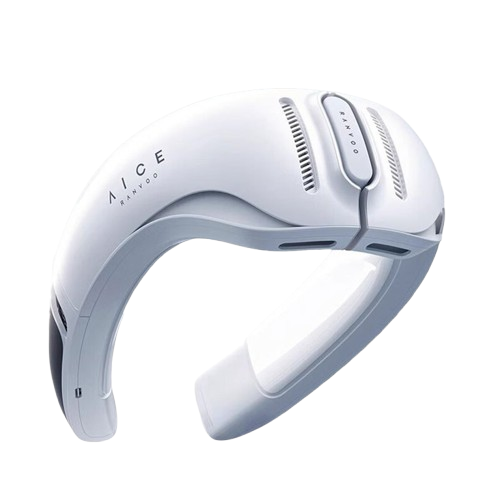
Hot flashes are no joke. If you’re navigating the unpredictable waves of perimenopause, menopause or hyperhidrosis, you know how quickly the heat can strike—leaving you sweating, flushed, and anxious for relief. Unlike the conventional neck air conditioner that relies solely on fans to blow air around, we focused on devices that integrate cold plates with advanced cooling technology for more effective, targeted relief. While these devices can be more expensive (this one is currently priced at $179 on sale, down from $199), I prioritized effectiveness over price, knowing that a reliable solution would be worth the investment when dealing with sudden, intense heat.
During my research, two top contenders emerged as the most effective options: the Torras Coolify 2S and the RANVOO AICE LITE Neck Air Conditioner. I’m a stickler for details and after a thorough comparison, I ultimately opted for the AICE LITE. While both are highly rated at exactly 4.0/5, and have several features in common, including their price range, the AICE LITE stood out thanks to its market-beating cooling coverage area of 15,020 mm³ (compared to 8,000 mm2) a center hinge design for added comfort, and user feedback indicating better outdoor performance. Given that I live in Arizona, where the heat can be brutal, this outdoor performance was a key deciding factor.
Here’s why the RANVOO AICE LITE Neck Air Conditioner might just be the perfect tool to manage hot flashes, hyperhidrosis, and more.
Hot Flash Relief at the Push of a Button: The RANVOO AICE LITE Neck Air Conditioner
Anyone dealing with hot flashes knows they don’t care about convenience. They hit during the worst moments: mid-conversation, while cooking, or even as you’re trying to fall asleep. That’s where the RANVOO AICE LITE Neck Air Conditioner shines.
With its advanced ICEMAX cooling technology, this portable neck cooler kicks into action almost instantly. Aluminum cooling plates, designed to be 2.6 times more effective than standard materials, send a soothing chill to your neck and key blood vessels. This helps cool your whole body quickly, offering relief just when you need it most.
The AICE LITE isn’t just for hot flashes, though. If you experience hyperhidrosis, its targeted cooling can help you stay dry and comfortable, reducing excess sweat in high-stress or warm environments.
Unlike fans that simply blow air around, the wearable provides targeted cooling that feels refreshing, not overwhelming. Its center-hinge design allows for a better fit and enhanced comfort, making it particularly suitable for long periods of wear. Combined with its expansive cooling area of 15,020 mm³—far superior to similar devices like the Torras Coolify 2S (8,000 mm2)—and its reliability in outdoor conditions, it delivers comprehensive relief during even the most intense hot flashes.
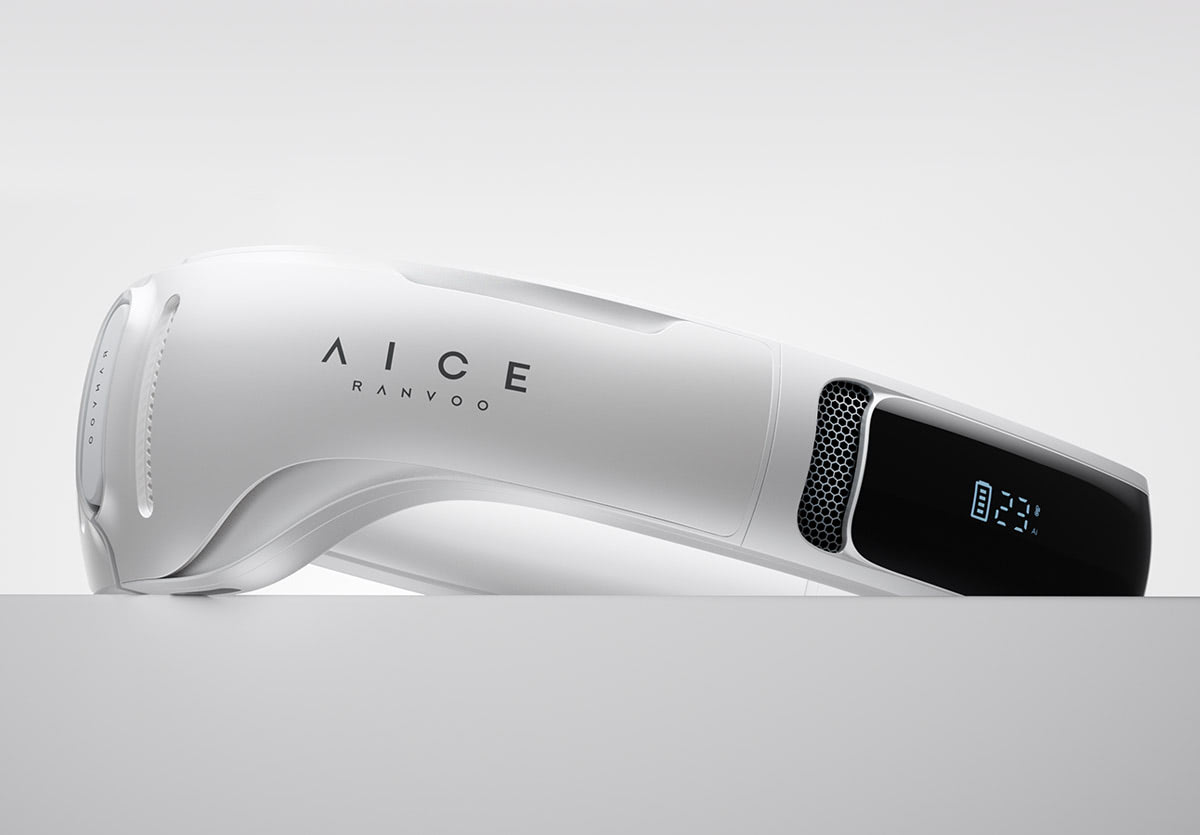
The Neck Air Conditioner That Works for Every Scenario
What sets the RANVOO AICE LITE apart is its versatility. While it’s a lifesaver for managing hot flashes, its features make it useful in countless other situations:
Four Modes for Tailored Comfort
This isn’t just a cooling device. The RANVOO AICE LITE offers Cooling, Heating, Fan, and AI modes, letting you adjust the temperature and airflow based on your needs. Whether you’re trying to cool down from hot flashes or warm up on a chilly day, this neck AC unit has you covered.
It’s Portable and Lightweight
Unlike clunky cooling systems, the AICE LITE is designed to be a portable neck AC unit. It’s lightweight and ergonomic, so you can wear it for hours without discomfort. The center hinge ensures a secure fit for various neck sizes, offering a more comfortable alternative to the spring mechanisms used in most neck ACs to stay secure, which can exert pressure inward.
Customizable via the RANVOO App
The accompanying app lets you fine-tune settings like temperature and wind speed. While there’s a slight learning curve, once you get the hang of it, it offers impressive control.
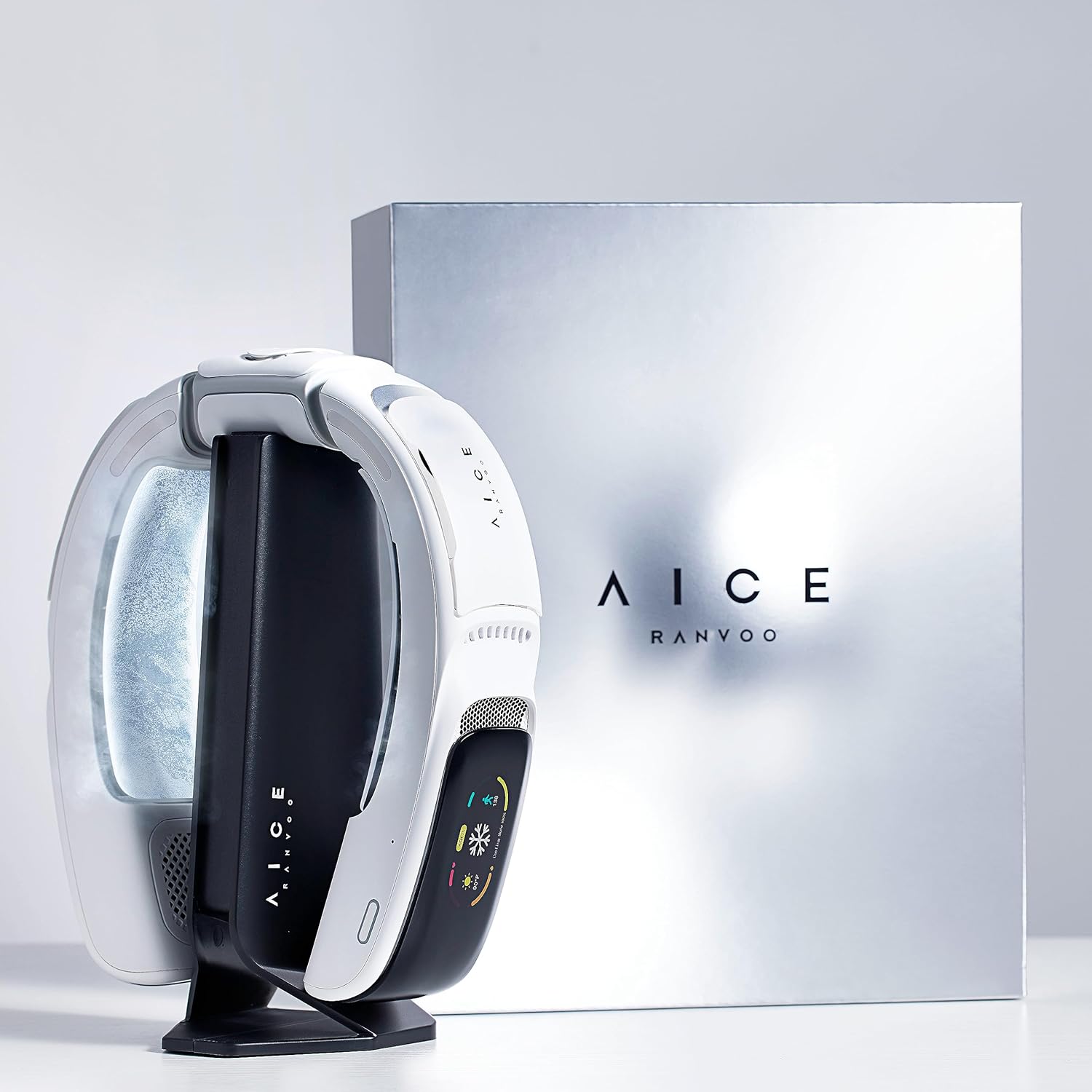
The Essential Neck Air Conditioner for Menopause, Hyperhidrosis, and More
The AICE LITE isn’t just about cooling—it’s about empowering you to take control of your comfort. During perimenopause and menopause, this portable neck cooler can make all the difference in staying calm and composed, even during unexpected heat surges. Similarly, for those with hyperhidrosis, its quick cooling can offer a discreet and effective way to stay sweat-free in hot or stressful situations.
Its utility extends beyond just keeping you cool during summer heatwaves. The AICE LITE is also equipped with a heating mode for winter, making it versatile year-round. While its market-leading cooling area of 15,020 mm³ and ergonomic center hinge make it a solid option for personal comfort, it’s important to manage expectations. Cooling efficiency can drop in extreme heat, so it’s not a replacement for traditional air conditioning during the hottest of days. The app can be a bit tricky to navigate, and the device itself can feel slightly heavy for extended outdoor use. However, when used appropriately, it offers effective relief exactly where you need it.
Battery Life That Keeps Up with Your Day
One of the standout features of this neck air conditioner is its long-lasting battery. Equipped with a 6000mAh battery, it can run anywhere from 3 to 30 hours depending on your settings. Need a quick recharge? It powers up to 80% in just two hours. For those extra-long days, you can even use the device while it’s plugged into a power bank.
Why the RANVOO AICE LITE Neck Air Conditioner Stands Out
Here’s why it’s making waves:
Pros:
- Efficient cooling even in high outdoor temperatures.
- Multi-mode functionality including cooling, heating, and fan modes.
- Long battery life with fast charging capability.
Cons:
- Can be heavy for prolonged use.
- Cooling efficiency may drop in extremely high temperatures.
- Takes a bit of time to fully understand all the features of the app.
Final Thoughts: The Ultimate Wearable for Hot Flash Relief
For anyone navigating the challenges of perimenopause, menopause, or hyperhidrosis, the RANVOO AICE LITE Neck Air Conditioner is more than just a gadget—it’s a lifeline. From managing hot flashes to staying comfortable during summer heat, this personal neck AC unit delivers on its promises.
While it may not replace your AC on a 100-degree day, its portability, efficiency, and versatility make it a must-have for those seeking quick, targeted relief. Whether you’re dealing with sudden heat surges or just want a reliable portable neck cooler for your next outing, the AICE LITE has your back—and your neck.
Verdict: Reliable, effective, and a game-changer for beating the heat, this neck air conditioner delivers comfort when you need it most.
]]>Frozen shoulder might sound like something you’d get from an overly aggressive air conditioner, but for many women experiencing menopause, it’s a real and painful phenomenon. Known medically as adhesive capsulitis, frozen shoulder causes stiffness, pain, and a limited range of motion in the shoulder joint. And here’s the kicker: it can last months or even years. But could there be a link between menopause and frozen shoulder? Let’s dig in.
So what IS frozen shoulder?
To understand frozen shoulder, imagine your shoulder joint surrounded by a capsule of connective tissue. Normally, this capsule is flexible and allows your shoulder to move freely. But when you develop frozen shoulder, the capsule thickens and tightens, restricting movement and causing pain. This condition can develop gradually and may result in significant discomfort and restricted movement. Imagine the frustration of your shoulder feeling like a rusty hinge that refuses to budge.
Frozen Shoulder Symptoms: Menopause’s Little Surprise Gift
Frozen shoulder doesn’t appear overnight. Instead, it unfolds in three distinct stages:
- Freezing Stage: Pain develops and worsens, limiting your shoulder’s movement. This can last 6-9 months.
- Frozen Stage: Pain may ease, but stiffness becomes the main issue, making daily activities challenging. This stage can drag on for 4-12 months.
- Thawing Stage: Gradually, your shoulder’s range of motion improves, though full recovery can take years.
These symptoms make even simple tasks—like putting on a bra or reaching for a mug—feel like Olympic feats. Sound familiar? You might be experiencing frozen shoulder symptoms related to menopause.
So, where does menopause fit into this?
The Link between Menopause and Frozen Shoulder: When Hormones and Joints Collide
The hormonal rollercoaster of menopause can do more than trigger hot flashes and mood swings. Estrogen, which helps keep joints lubricated and muscles supple, drops significantly during menopause. This decline can lead to inflammation and stiffness—a perfect storm for developing frozen shoulder.
Interestingly, menopause and frozen shoulder are often linked because frozen shoulder is more common in women aged 40 to 60, which overlaps with the typical menopausal years. Coincidence? We think not. If you’re feeling like your body’s got a vendetta, know that you’re not alone—and relief is possible.
Let’s talk about what you can do.
Practical Relief for Menopause and Frozen Shoulder
While frozen shoulder can be frustratingly stubborn, there are steps you can take to ease the discomfort. Here’s what works:
1. Stretch and Strengthen
Gentle stretching exercises can help maintain range of motion and reduce stiffness. Try pendulum swings or doorway stretches—just don’t push too hard.
2. Heat and Cold Therapy
Applying a heating pad or ice pack can alleviate pain and reduce inflammation. Alternate between heat and cold to see what works best for you.
3. Over-the-Counter Pain Relief
Nonsteroidal anti-inflammatory drugs (NSAIDs) like ibuprofen can reduce pain and swelling. Always consult your doctor first.
4. Professional Help
Physical therapy can be a game-changer. Therapists can guide you through exercises tailored to your condition.
5. Home Gadgets That Help
If you’re a fan of practical solutions, these four products can complement your treatment plan:
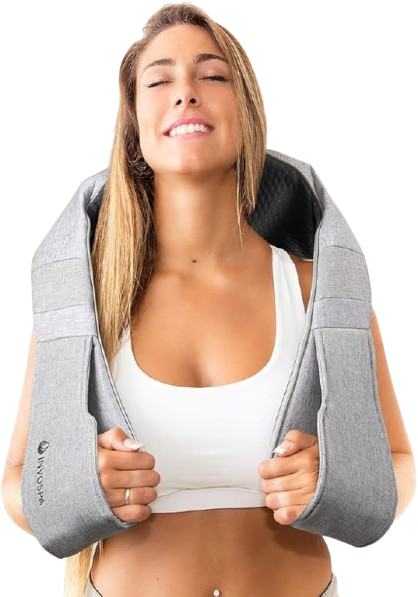
InvoSpa | Shiatsu Neck & Shoulder Massager
Amazon rating
Pamper yourself with a deep tissue kneading pillow that combines heat therapy and massage, helping to loosen tight muscles and alleviate stress

Upright GO 2 | Premium Posture Corrector
Amazon rating
Incorporating a posture corrector into your routine can be a game-changer by gently pulling your shoulders back and promoting proper alignment
Looking for more innovative solutions to support menopause? Click here to discover how you can make this journey smoother and more comfortable.
Preventative Tips for Menopause and Frozen Shoulder: Keep Calm and Keep Moving
While some factors—like hormonal changes—are beyond your control, you can take steps to lower your risk:
Manage Stress: High stress levels can exacerbate inflammation, so incorporate relaxation techniques into your routine.
Stay Active: Regular movement keeps your joints and muscles in good shape.
Prioritize Posture: Poor posture can strain your shoulders and neck, so stand tall.
When to See A Doctor
If shoulder pain persists or worsens despite your best efforts, it’s time to consult a doctor. In some cases, steroid injections or even surgery may be necessary to resolve the issue. While this isn’t the first course of action, it’s good to know that solutions are available.
Embrace the Journey
Frozen shoulder is a little-known yet significant symptom of menopause that can impact daily life, but armed with the right knowledge and tools, you can tackle this discomfort head-on. Remember, your shoulder isn’t frozen forever, and whether it’s through physical therapy, topical treatments, or mindfulness practices, you have the power to manage this condition. So, next time you find yourself reaching for that top shelf, don’t let frozen shoulder hold you back. With the right approach you can conquer this symptom and embrace the new chapter of life with new confidence!
]]>Ah, menopause – that mysterious phase of life that sneaks up on us like a stealthy ninja, armed with hot flashes and mood swings. But fear not, dear readers! Whether you’re the one experiencing this hormonal rollercoaster or the partner along for the ride, we’re here to shed some light on this transformative journey.
Did you know that in the United States, the average age at which women reach menopause is 52 years? That’s right, it’s like nature’s way of saying, “Congratulations! You’ve leveled up in life!” But don’t worry if you’re an early achiever or a late bloomer – menopause typically occurs between the ages of 45 and 55, giving us all a nice, wide window to look forward to (or through, depending on how you see it).
Now, you might be wondering, “Why should I care about menopause if I’m not the one experiencing it?” Well, dear partner, strap in because this ride affects both of you. Menopause can significantly impact relationships, with some women even considering leaving their jobs due to the severity of their symptoms. It’s like a cosmic test of patience, understanding, and the ability to locate a fan at a moment’s notice. That’s why supporting your partner during menopause is crucial—helping her through this phase will strengthen your relationship and show her she’s not alone.
Welcome to the jungle, my friend! But fear not! This guide is here to help you navigate the highs, the lows, and everything in between. So, grab your partner, a cool drink, and maybe a portable fan as we embark on this wild and wonderful journey through menopause. Together, we’ll prove that love can indeed conquer all – even when it’s accompanied by night sweats and mood swings 
The Basics: What Is Menopause, Exactly?
Menopause is a natural biological process that marks the end of a woman’s menstrual cycle so she can no longer get pregnant. But here’s the kicker: you only know you’ve hit menopause after you’ve gone 12 months without a period. It’s like a really long, hormonal game of hide-and-seek. Hormonal shifts during this time bring about a range of physical and emotional symptoms, and your partner’s experience will be unique. Understanding these symptoms will play a big role in supporting your partner during menopause and showing her you’re there every step of the way.
Symptoms: The Good, The Bad, and The Sweaty
Now, let’s talk about the star of the menopause show: symptoms. The headliner? Hot flashes, of course! These personal heatwaves affect about 75% of women, and for those overachievers out there, about 10% of women may continue to experience these delightful heat waves for up to 12 years after their final menstrual period. Hot flashes are often one of the most disruptive symptoms, making supporting your partner during menopause even more essential.
But wait, there’s more!
- Mood Swings: Emotional roller coasters that rival the plot twists in your favorite thriller.
- Sleep Disturbances: Insomnia or waking up drenched in sweat (often called night sweats).
- Nausea: A lesser talked about symptoms which comes up quite often in menopause
- Loss of bladder control: Sneeze at your own risk.
- Joint and muscle aches: Because who doesn’t want to feel 90 at 50?
- Changes in libido: Sometimes up, sometimes down, always unpredictable.
- Memory Lapses: “Where did I put my keys?” may become a frequent refrain.
How to Be the Ultimate Supportive Partner During Menopause
1. Educate Yourself
Start by learning about menopause so you can better understand what your partner is experiencing. Read reputable articles, or just visit menopause TikTok if you have no attention span! Knowledge is power, and it shows you care. Educating yourself on these symptoms will make a huge difference in supporting your partner during menopause.
2. Patience is a Virtue
Get ready for a rollercoaster of moods! Remember, this isn’t about you—it’s about their body adapting to hormonal changes. Responding with kindness and understanding can make all the difference. Patience and empathy are key.
3. Channel Your Inner Problem-Solver
Some symptoms come with practical solutions, and nothing says “I’ve got your back” like a thoughtful gesture. Whether it’s a comforting cup of tea or one of these game-changing gifts, show her you’re here to help.
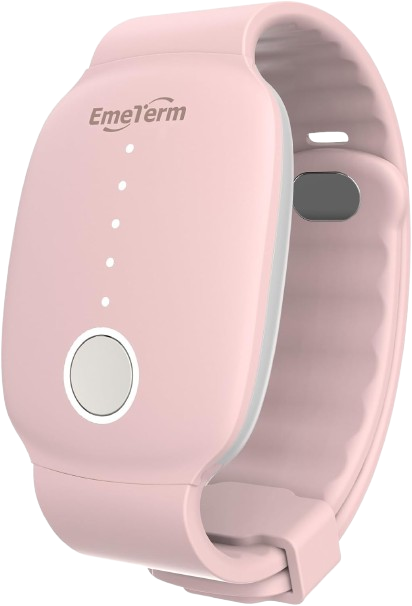
Feeling queasy? Say goodbye to nausea with the EmeTerm, a wearable device that uses gentle electrical pulses to ease motion sickness and morning sickness—no meds required!
Looking for more innovative solutions to support menopause? Click here to discover how you can make this journey smoother and more comfortable.
4. Support Their Health
Encourage your partner to eat a balanced diet, exercise regularly, and stay hydrated. These habits can help manage symptoms. Join them for walks or whip up healthy meals together. It’s a fantastic way to bond while being their wellness buddy.
5. Communicate Openly
Open communication is a key component of supporting your partner during menopause. Chat with your partner about how they’re feeling and what they need from you. Be an active listener. Sometimes, all they need is someone to hear them out without jumping in to fix things.
6. Navigating Intimacy Changes
If menopause is shaking up your physical connection, approach the topic with all the sensitivity of a cuddly teddy bear. Ask how you can support them and consider exploring products like lubricants or vaginal moisturizers to keep the spark alive!
What NOT to Do
- Don’t dismiss symptoms as “no big deal” or something to “push through.” These are real feelings!
- Don’t make jokes about menopause that belittle their experience (save the humor for self-deprecation—like how clueless you were before reading this guide!).
- Don’t take mood swings personally. Remember, it’s hormonal. It’s not you; it’s their changing chemistry!
Bonus Points: Thoughtful Gestures
- Surprise them with their favorite snacks or a cozy care package.
- Offer to attend doctor’s appointments if they want company.
- Suggest a “self-care day” for them to unwind and recharge.
Remember, You’re a Team
Menopause isn’t just their journey; it’s a shared experience. By being patient, proactive, and supportive, you can help your partner navigate this transition with love and understanding. And who knows—you might even come out of it stronger together!
Now go forth and be the menopause MVP! (And maybe keep a fan handy—you’ll thank us later)
]]>


